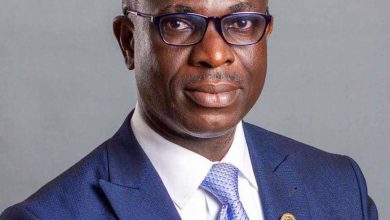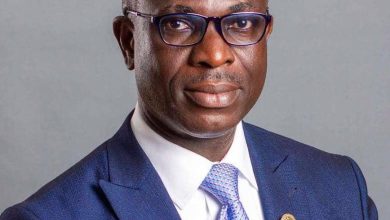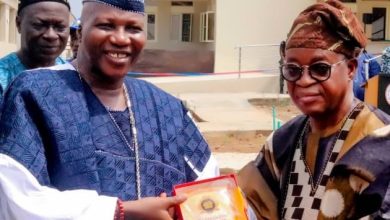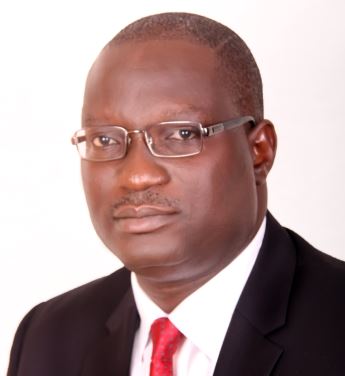
Public lecture on the topic restructuring…An Engineer’s Perspective by Engr. Dideolu Falobi, fnse, fiod in celebration of Engr. Adeyemi Oyedepo’s 60th birthday on the 15th of December, 2020
ABSTRACT
The main objectives of this paper are to explore the critical issues in the agitations/calls for restructuring Nigeria by analyzing the foundational problem which is the constitution of Nigeria upon which other structures are built. This paper scrutinizes the background of the various experiences and attempts made at constitutional development in Nigeria. The paper proposes that Nigeria’s federal structure is built on a faulty foundation that was bequeathed by the colonial masters, hence the persistent calls for a national sovereign conference, zoning of key political offices in the country, including the Presidency, and currently the restructuring of the federal structure for socio-political stability.
This paper, which is essentially historical and descriptive, utilizes data drawn mainly from secondary sources and analyzed using content analysis. The paper discovers that Nigeria’s federalism has failed to meet the requirements. Whereas, so much power is concentrated at the federal level while other levels of governments continue to exist as appendages. This runs ultra-vires to the federal principle and poses a serious threat to the Nigerian State and its federal practice.

Moreover, the paper observes that the lop-sided and imbalance nature of Nigeria’s federal practice has degenerated into national challenges symptomized by perpetual domination of the minority by the majority ethnic groups, ineffective leadership, ethnic rivalry, unequal distribution of national wealth, as well as long term military incursion into the nation’s politics among others.
The paper, therefore, recommends, among others, that for the sake of realizing socio-political stability and proper nation-building, there is a need for constitutional re-engineering and structural realignment of the present federal political arrangement in the country.
TERM DISCOURSE
According to the concept of IGI Global journal, restructuring in the Nigerian context is defined as a transition from a lopsided federal political structure to true federalism characterized by political inclusiveness, people-oriented constitutional amendments, resource control, electoral process, political representation, sharing of offices, citizens’ right, protection of lives and properties, and building of enduring political infrastructure.1 According to Eugene Uwalaka, a Guardian newspaper columnist, restructuring is a constitution review strategy aimed at bringing government as closely as possible to the people at the grassroots.2Also, the idea of political restructuring as defined in the journal of Dele & Hakeem states that it is an attempt towards establishing effective institutions that can both accommodate diverse interests and provide effective government. They further argued that federal restructuring targets three main objectives: (i) the creation of a system that effectively promotes collective identity and distributive politics; (ii) the establishment of a system that promotes equity and justice amongst the multinational groups characterizing a federal system; and (iii) the understanding of mutual tolerance and respect for the rights of aggrieved ethnic groups.3
INTRODUCTION
The most critical barriers hindering Nigeria’s search for peace, national unity, and sustainable progression towards national stability are the dysfunctional political and economic structures, which have continued to reinvent themselves as bad governance, political corruption, violent ethnopolitical agitations, resource dependency curse, and endemic underdevelopment. Despite these heterogeneous challenges, the call for restructuring and true federalism which could have provided succor for the Nigerian state through devolution of power from the center to the states and local government has become a pawn to score a cheap political point by the Nigerian political elites.
While the calls for restructuring and adoption of fiscal federalism have been on for a long period in Nigeria, such agitation has been mainly coming from those who are in the opposition, who have lost out in the political merchandise, dis-advantaged or marginalized in political power and resource sharing and control; and the elites who seek their selfish class interests; while the others, including state authorities, resist and turn away from the agitations.

The various regimes while in power hardly support the restructuring agenda, but only play gimmicks game and pass on to subsequent incoming regimes. Many of the agitations are also partly dominated by few elites who are more concerned with popularity, politics of accommodation, and interested in the acquisition, control, and consolidation of the state political and economic powers and resources. For the common man, it has remained the same, the various regimes have been the same with little difference and impact on the lives of the ordinary and the downtrodden, except in a few cases. At a point, the politics of restructuring has on its own become a means of seeking relevance, resource allocation, political power expropriation, and accommodation among the elites. To be precise, politics in Nigeria in both orientation and character, the calls for restructuring Nigeria and resistance of same, and the calls for national unity are mostly dishonestly driven to achieve certain person interests.4
A BRIEF HISTORY OF NIGERIA FROM 1800 TO 1914
Nigerian evolved out of a series of historical incidents engineered by the British government. In ruling Nigeria, the British influenced the prohibition of slave trade in 1807. The first attempt by the British to subjugate the part of what later became Nigeria to British imperial control took place on December 24, 1851, when the ships of the British West Africa Squadron bombarded Lagos. After three days of eventful and historic resistance, Oba Kosoko and his supporters were forced to accept defeat.5
By 1861, Britain had annexed Lagos to become the crown colony and established the Oil River Protectorate in 1884. British influence in the Niger area increased gradually over the 19th century, but Britain did not effectively occupy Nigeria until 1885. Other European powers acknowledged Britain’s dominance over Nigeria in the 1885 Berlin Conference. From 1886 to 1899, much of the country was ruled by the Royal Niger Company, authorized by charter, and governed by George Taubman Goldie. In 1900, the Southern Nigeria Protectorate and Northern Nigeria Protectorate passed from company hands to the Crown. At the urging of governor Frederick Lugard, the two territories were amalgamated as the Colony and Protectorate of Nigeria in 1914, while maintaining considerable regional autonomy among the three major regions.

EVOLUTION OF THE NIGERIAN CONSTITUTIONS
After the annexation of Lagos by the British in 1861, a legislative and executive council was constituted for the administration of her Colony. Hence by 1886, Lagos became a political entity with its own Governor, executive, and legislative councils and by extension in 1906, the protectorate of Southern Nigeria and the colony of Lagos were amalgamated and called the colony and protectorate of Southern Nigeria. In 1914, the Colony and Protectorate of Southern Nigeria were merged with the Protectorate of Northern Nigeria and they were referred to as the Colony and protectorate of Nigeria.
Consequently, the advent of the colonial rule with its dominant force tied the people with the common constitutional provisions as established by the colonial masters and as a result, the administration of Nigeria was at the discretion of the colonialist. This was how the constitutions emerged.
COLONIAL PHASE 1914-1959
Lord Lugard Constitution (1914-1922)
This constitution paved way for a single governor and commander in chief for the whole country. Under Lugard’s scheme, a governor-general headed the entire government. He was advised by the executive council and the three protectorates were each under a lieutenant governor. For administrative ingenuity, the Railway, military, audit, treasury, posts and telegraphs, judiciary, survey, and legal were kept under central departments.6
Despite this amalgamation and the resultant constitution, the constitution itself did not solve the problem it was intended to solve. North and Southern Nigeria continued to be administered as a separate entity and soon ran into problems with Nigerians who were disgruntled and disenchanted with the series of limitations of the Constitution. The constitution was eventually replaced by another constitution, yet named after its promoter and architect in Sir Clifford who replaced Lord Lugard as the Governor-General.
The Clifford Constitution (1922-1946)
This is the longest-serving constitution that Nigeria has ever known. It introduced the first electoral system in Nigeria. The first election was conducted into the legislative council with four slots: 3 for Lagos and 1 for Calabar. However, the election was based on a limited franchise which restricted the election to those that earned a minimum of 100 pounds annually, which was very expensive for most Nigerians. It also introduced a legislative council which replaced the Nigerian council. It consisted of 46 members with the governor as the head. Out of the 46, 23 were official members and 19 were unofficial members. The remaining four were elected as previously stated. However, the council could only legislate for the South. The governor legislated for the North via proclamation. There was also an executive council, however, it had no Nigerians. It consisted of the governor, chief secretary, lieutenant governors, an administrator for Lagos, attorney – general, commandant of the Nigerian regiment, director of the medical service, Comptroller general, and Secretary for native affairs.

However, this constitution failed to meet Nigerian aspiration as many nationalists agitated for an inclusive government. For instance, this constitution brought the idea of sectionalism as the constitution was meant for the Southern protectorate alone. The Legislative Council also included the South and excluded the North. The Legislative Council was dominated by the Europeans. Nigerians perceived the constitution as an imposition. The Governor-General was at liberty to denigrate issues of concern to the Legislative and Executive Council. Consequently, a new constitution had to be thrashed out to reflect the new trend in the country in the name of Arthur Richard who was also the Governor at the time.
The Richards Constitution (1946-1951)
Sir Arthur Richards provided a new proposal for the constitutional amendment. This was as a result of pressure mounted on him by the educated elites. They felt that the Clifford Constitution did not represent the indigenous population. Therefore, the Governor introduced the constitution which had the following aims: (i) To promote Nigeria’s unity. (ii) To provide adequately for the heterogeneous nature that makes up the Nigerian country. (iii) To provide an inclusive government where Nigerians can determine their affairs.
According to Joye and Igweike, the constitution preserved the existing Executive Council and enlarged the legislative council with nation-wide powers to make laws for the peace, order, and good government of Nigeria as a whole but some reserved legislative powers that were vested on the Governor. The membership of the council was made up of the Governor (President), 16 official (13 ex-officio and 3 nominated), and 28 unofficial (24 nominated and 4 elected) members.8
The constitution also provided for regional houses of assembly. The members of the regional assembly were nominated by the native authority. However, they weren’t legislative bodies. They were just grounds for discussing national issues. Also, it was from the house of assembly that members were nominated to the legislative council. The East and West had unicameral legislature while the North, in addition to a house of assembly, had a house of chiefs. Also, the constitution reduced the amount of the limited franchise from 100 pounds to 50 pounds. This is considered a plus because more people could vote and be voted for. However, it was still too expensive for most Nigerians. The executive council in Lagos also had for the first time, Nigerians. They were Sir Adeyemo Alakija and Bankole Rhodes.

The constitution still had some defects. First, it limited the franchise to only Lagos and Calabar. Also, the money required for the right to vote was still too expensive for most Nigerians. Also, the regional houses of assemblies could not make laws, they were merely lame ducks for public discussion. The constitution also did not include the elites. This is because those nominated into the regional houses of assembly and the legislative council were nominated by the native authority. On these notes, the clamor for an improved constitution took the polity center stage.
Macpherson Constitution 1951-1954
Richard’s Constitution was severely criticized by the nationalists because it was imposed on Nigerians without any prior consultation. Hence, a recommendation on a proposed new constitution was made by a select committee of the Legislative Council in March 1949. This was followed by a wide consultation which extended even to the village level. The consultation was followed by an all-Nigerian Constitutional Conference in January 1950. Part of the agreements reached during the conference was the transformation of the 3 regions from administrative to political regions with the establishment of regional legislatures, and the acceptance of the federal system of government. The Macpherson Constitution came into effect in 1951.9
Awa wrote that the constitution provided for a unicameral legislature, known as the House of Representatives. Under this constitution, the advisory and deliberative provincial councils of the previous Constitution now acquired independent legislative power within certain fields.10 The Constitution also empowered that election to any post must be a direct or indirect method. The Constitution empowered to legislate on any matter declared by any law of the House of Representatives and to be within the competence of the legislature of each region. The establishment of regional legislatures invariably led to the emergence of ethnic-based parties such as the National Council of Nigerians and the Cameroons (NCNC) Action Group(AG) and the Northern People’s Congress(NPC). The governor was empowered to make laws for the peace, order, and good government of Nigeria, with the advice and consent of the House of Representatives. The specific organ for formulating policies was the Council of Ministers, their advice to the governor was charged towards matters in which he did not have discretion. The public service and the judiciary were left in the hands of the central government and not regionalized.11
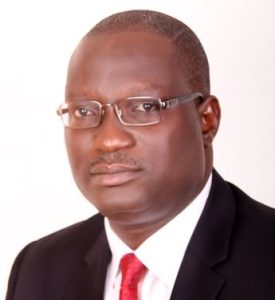
Despite the recorded success of the constitution, it still had its flaws. For instance, it was not able to determine whether the country was to have a bicameral Legislature or a unicameral Legislature. This is because while the Northern and the Western Regions were given a bicameral Legislature, the Eastern Region on the other hand was given a unicameral Legislature. The constitution did not make room for a Second Chamber at the national level. Another flaw in the Macpherson constitution is that it did not provide the post of a Prime Minister at the center. This lack of provision affected national cohesion in a country with heterogeneous ethnic groups, languages, and cultures. The Macpherson Constitution was also criticized because it did not allow for teamwork in the Cabinet that it created simply because the regional cabinet members perceived they owed allegiance to their regions where instruction emanated from. Another demerit of the Macpherson constitution is that it was not decisive on whether the country should be a federal state or a unitary state. Consequently, the two systems were employed in the running of the country. The Macpherson constitution was also criticized for its inability to grant a fully responsible government to the people of Nigeria as the British Government still held its grip on the External Affairs and the Defense of the country. The Macpherson constitution did not create a constitutional court to which conflicts arising out of the provisions of the constitution could be referred. Rather it gave the Governor the prerogative powers to determine constitutional questions that arose.12
Lyttleton’s Constitution 1954-1960
The Lyttleton Constitution was the last pre-independence constitution of Nigeria and it was enacted in 1954 when the Macpherson constitution of 1951 was reviewed through constitutional conferences. Those conferences were the London constitutional conference of 1953 and the Lagos constitutional conference of 1954. The revised constitution gave birth to the Lyttleton constitution.
The Lyttleton Constitution expanded the Nigeria semi-federal system into super regions which were politically and economically stronger than the center and also made each region have their marketing board, separate regional revenue resources, a separate election for regions and federal. There were provisions for each region for separate public services, judiciary, and a governor replacing former Lt Governor. Through this constitution in 1957, the office of the Prime Minister was created at the center. With the independent date for Nigeria approaching a new constitution had to be trashed out to reflect the trend of time as Nigerians intensified their independent political demands. This led to the Robertson Constitution of 1958 otherwise known as Independent Constitution.13

Despite the feat recorded by the Lyttleton Constitution, it also has its delimitating factors. Among these includes the constitution allowed autocratic powers on the governor-general and regional governors. It did not institute a common electoral system for the country. It instituted a revenue formula against the national interest of Nigeria. The regional structure of the constitution only favored the major ethnic groups while detrimental to the minority group and this consequently paved way for regional, ethnicity, and national disunity.14
POST-COLONIAL ERA (1960-1999)
Independence Constitution of 1960-1963
The Independence Constitution provided a parliamentary system of government, with the three regional governments (Northern, Eastern and Western Regions), a bicameral legislative framework at the federal (Senate and House of Representatives) and regional levels (House of Assembly and House of Chiefs) with the legislative powers of government delineated into three lists; exclusive, concurrent and residual. The parliamentary system premeditated under the constitution recognized the British monarch as the Head of State with powers to appoint a resident agent (the Governor-General) to exercise executive powers on her behalf while a Prime Minister elected by the Federal parliament acted as the Head of the Federal Executive Council. The 1960 Constitution significantly kept Nigeria under British constitutional control. The Queen of England remained Nigeria’s constitutional monarch and the final court of appeal was the Judicial Committee of the British Privy Council (Privy Council).
Republican Constitution of 1963-1966
The pictured above constitutional imbalance culminated in the conference held in Lagos from 25th to 26th, July 1963 where Nigerian political leaders resolved that Nigeria should become the Federal Republic, which was passed on 19th September 1963. On 1st of October 1963, the Constitution of the Federation Act resulted in the entry into force of the Republican Constitution.15Thus, the key features of the 1963 Constitution were the establishment of Nigeria’s First republic under a parliamentary system of government by replacing the Governor-General appointed by the British monarch with a President elected directly by members of the Nigerian federal legislature and he could be removed by the impeachment of the house of representatives. The principle of human rights was further favored. The number of seats in the Senate was increased from 44 to 56 and that of the house of representatives from 305 to 312. Also, the Federal Supreme Court became designated as the final appellate judicial authority over any person or matter in Nigeria. In the absence of the president of the republic, the senate president would act for him.16

Despite the eagerness of the political elites to govern themselves without the interference of the Westminster and as a result came up with an indigenous 1963 Constitution, maintaining orderliness among the regional powers was a problem due to polity of mediocrity and intolerance. According to Adewale Ademoyega in his book titled “Why we Struck” in his word “the Balewa led government would not take kindly to any erosion of its power, no matter how legitimate the erosion might be”17. Looking at the extent of constitutionalism, Ojo substantiated that, the Parliamentary system of government failed to accommodate the grievances of Nigerians due to the abdication of responsibility by the executive and its inability political elites to abide by the rules of the game.18Akinboye and Anifowose corroborated that “all available apparatus were employed by the power elites against their opponent.”19Ake opined that after the independence there was a political contraption as the new rulers tried to wedge their political power to create an economic base to consolidate their political power.20 Consequently, these impeditive rule of law jeopardized the 1963 Constitution on the 15th of January, 1966 when the first military coup happened in Nigeria.
MILITARY RULE: 1966 – 1999
On 15 January 1966, the military, led by Major CK Nzeogwu, took over the government. The Prime Minister, Sir TafawaBalewa, the Premier of the northern region and also Sarduana of Sokoto, Sir Ahmadu Bello, the premier of the western region, Chief S. L.Akintola, the federal minister of finance, Chief Festus Okotie-Eboh, and other top politicians were killed. Through a “palace coup” against the revolution, Major General JTU Aguiyi-Ironsi, an Easterner, usurped the coup de tat to his advantage. He took charge of the government and proceeded to enact several decrees that undermined the Republican Constitution.21
Decree No. 1 of 1966 (Constitution Suspension and Modification Decree)
Decree No 1 suspended and modified portions of the 1963 Constitution and the four regional Constitutions in a manner that subordinated them to military laws. It abolished Parliament and the four regional legislatures. Section 3 empowered the Federal Military Government to make laws for the good governance of the country. Military governors were appointed for the four regions and authorized to make laws on matters in the concurrent legislative list with the prior approval of the Federal Military Government. Laws made by parliament were re-designated as ‘Decrees,’ while regional laws became ‘Edicts.’ Section 6 provided that ‘no question as to the validity of this or any other Decree or Edict shall be entertained by any court of law in Nigeria’. Section 7 vested the executive powers of the republic on the head of the Federal Military Government, who may delegate his powers to the military governors of the regions. Section 8 established a Supreme Military Council to replace Parliament as the apex law-making body. However, it did not outline the functions of the council. It also established a federal executive council and vested it with decision-making functions. Curiously, it made no provision for the division of executive and legislative powers at the regional level. Rather, it provided that ‘any reference to the government of the Region shall be construed as a reference to the Military Governor of the Region’.22

Decree No. 34 of 1966 (Constitution Suspension and Modification Decree)
Decree 34 was promulgated on the 24thof May 1966, it abolished and banned all political parties and political activities. Under it Nigeria formally ceased to be a Federation and was renamed the ‘Republic of Nigeria’, the Federal Executive Council became the ‘National Military Government’, the Federal Executive Council became simply the ‘Executive Council’, and Lagos the ‘capital territory’. The Regions were formally abolished, but the Provinces (the next largest administrative division below the Regions) were grouped into ‘the Northern Group of Provinces’, the ‘Eastern Group of Provinces’, etc. These Groups corresponded exactly with the previous Regions and the four Military Governors continued in office administering the same area as before.23
However, the grievous effect that greeted this decree swept fire through many cities of Northern Nigeria, taking tolls on thousands of Nigerian citizens – not only Ibos but also Yorubas, Efiks, Anangs, Ijaws, and so on. The fire was let loose by the machinations of the NPC (Northern People’s Congress) oligarchy that had been swept out of office on January 15, 1966. They claimed that the riots were a practical protest against the over-centralization of government by Decree No 34.24
Furthermore, the north viewed the January coup as an ethnic coup by Igbo officers from eastern Nigeria. Coupled with the perceived domination of the military top echelons by Igbo officers, the powder kegs for a counter-coup were laid. The kegs were lit on 29 July 1966 by young northern army officers in an extraordinarily bloody coup d’état. The counter-coup claimed the lives of the head of state, General Ironsi, along with his host, the governor of the western region, Lieutenant Colonel Fajuyi. It also claimed the lives of hundreds of Igbo military officers.25
Decree No. 59 of 1966 (Constitution Suspension and Modification Decree)
General Yakubu Gowon abolished Ironsi’s Decree No 34 and replaced it with Decree No 59. This decree returned Nigeria to the federal structure of 17 January 1966, “Subject to the provisions of this Decree, Nigeria shall as from 1st September 1966 again be Federation under section2 and 3 of the Constitution of the Federation”26
The Aburi Accord of 1967
The power struggle between Eastern Nigeria and the Northern controlled Government in Lagos and Kaduna followed the Northern counter-coup last July against Major General Agunyi Ironsi, the Eastern Head of the National Military Government and Supreme Commander of the armed forces, came to a climax on 30 May 1966 when Lt-Col. Ojukwu, the Eastern region Military Governor, finally and formally announced the independence of his Region as the new state of Biafra. This followed a series of actions and counteractions between Enugu, the Eastern capital, and Lagos in the preceding days. On 27 May in Enugu, the Consultative Council, made of delegates of the different provinces of the Eastern Region, voted overwhelmingly in favor of immediate and total secession from the Nigerian Federation and urged Ojukwu to declare the region independence.27

In a sharp reaction the same day, Lt-Col Gowon, the Northern Head of the Federal Military Government, declared a state of emergency throughout the country and assumed sole command of the army, abolishing the Supreme Military Council of the Military Governors which had been legally the plural government of the Federation since 17 March 1966. The next day, he announced the promulgation of a decree splitting the four Regions into twelve new states, including six in the North, and three in the East. Unless something miraculous happens at the last moment, violence is inevitable.28
The impasse can be said to have about because of conflicting interpretations by Gowon and Ojukwu, the two principals, of certain ‘decisions’ reached by the military leaders of the Supreme Military Council on the 4 and 5 January at Aburi, Ghana, where they met at the invitation of Lt-General Ankrah, the Chairman of the Ghanaian National Liberation Council.29 After an exhaustive discussion lot of declaration were ratified among which include:
1.renounce the use of force as a means of settling the Nigerian crisis;
2.reaffirm their faith in discussions and negotiation as the only peaceful way of resolving the Nigerian crisis, and;
3.agree to exchange information on the number of arms and ammunition available in each unit of the Army in each Region and in the unallocated stores, and to share out such arms equitably to the various commands;
4.agree that there should be no more importation of arms and ammunition until normalcy was restored.
5.Army to be governed by the Supreme Military Council under a chairman to be known as Commander-in-Chief of the Armed Forces and Head of the Federal Military Government.
6.Establishment of a Military Headquarters comprising equal representation from the regions and headed by a Chief of Staff.
7.Creation of area commands corresponding to existing regions and under the charge of area commanders.
8.Matters of policy, including appointments and promotion to top executive posts in the Armed Forces and the Police to be dealt with by the Supreme Military Council.
9.During the period of the military government, military governors will have control over area commands for internal security.
10.Creation of a Lagos Garrison, including Ikeja Barracks.30
The whole essence of the “Aburi Accord” effort was to curtail the imminent civil war in Nigeria. Still, there was governance recklessness, and caution was thrown into the wind due to tribal intolerance, greed, grievances, and population pressure.31 Consequently, the civil war broke out in July 1967 which ended in 1970.
Decree No. 28 of 1970 (Constitution Suspension and Modification Decree)
General Yakubu Gowon’s regime promulgated the Federal Military Government Decree 28 of 1970.32 This decree asserted that the first and second military coups were revolutions that altered the legal orders preceding them. Accordingly, decrees were supreme and superseded the constitution in the new legal order.
This trend of the supremacy of decrees continued with subsequent military regimes in Nigeria. For example, in considering the hierarchy of norms under a military regime, the Supreme Court stated:
Under the present condition, Decrees are the Supreme Laws in Nigeria, and all other laws, including the current Constitution, are inferior to the Decree as provided for by the Federal Military Government (Supremacy and Enforcement of Powers) Decree 1984.33
After the civil war, Gowon instituted programs ostensibly aimed at returning the country to civilian governance. Following his inability to keep to his timetable to return Nigeria to civilian governance, he was overthrown in a bloodless coup d’état on 29 July 1975, while attending an Organization of African Unity meeting in Uganda. He fled to London, and General Murtala Mohammed replaced him on 30 July 1975.34
Decree 32 of 1975 (Constitution Suspension and Modification Decree)
General Mohammed’s regime accorded itself legal recognition by enacting the Constitution (Basic Provisions) Decree 32 of 1975. This Decree suspended parts of the Constitution and subordinated the rest to military decrees. Three notable constitutional developments occurred between 1975 and 1979 when civilian governance was restored. The first is the creation of seven states to increase the number of states to 19.35
The second is the establishment of Abuja to replace Lagos as the federal capital territory. The third is arrangements for a new constitution and a program for a credible transition to civilian governance. These arrangements were part of populist reforms introduced by General Mohammed before he was assassinated in an aborted coup d’état on 13 February 1976.36
Thereafter, his deputy, General Olusegun Obasanjo, became the head of state. Obasanjo stuck to his predecessor’s transition program and return Nigeria to civilian governance on 1 October 1979. To achieve this, he introduced the 1979 Constitution. This Constitution lasted until January 1984 when the military seized back political power.37
In 1989, General Babangida’s regime introduced a constitution widely believed to pave way for a civilian President. However, this Constitution was discarded following Obasanjo’s forced resignation in 1993. Attempts to introduce another constitution were made under General Abacha’s administration and led to the 1995 draft Constitution. This Constitution was yet again abandoned after Abacha’s death in 1998.38

General Abubakar, who succeeded Abacha, eventually set up the Justice Niki Tobi Constitution Amendment Debate Coordinating Committee on 11 November 1998. The Tobi Committee was mandated to draw insights from the 1995 draft Constitution and the 1979 Constitution. The report of the Committee and its subsequent tinkering by the military culminated in the 1999 Constitution, which became operational on 29 May 1999.39
1999 Constitution
The current 1999 Constitution was produced without any elaborate processes by the Gen Abdusalami Abubakar administration that was committed to handing over to a civilian administration. He inaugurated a 25 member “Constitutional Debate and Coordinating Committee” in November 1998 with a mandate to organize a debate on the 1995 Constitution. The committee was headed by Justice Niki Tobi who was a Justice of the Court of Appeal at the time. The Committee requested for a memorandum from individuals and groups within and outside Nigeria. Workshops and symposia were organized by individuals and groups on the 1995 draft Constitution and its reports were made available to the Committee.40
The Committee also collated data from public hearings it held at National debate centers and a special hearing at Abuja where various interest groups like the Judiciary, Nigerian Bar Association, Nigerian Police Force, Nigerian Medical Association, Nigerian Society of Engineers, Nigerian Labor Congress, and market women appeared and made contributions. The data was then submitted to the Head of State.41
The Provisional Ruling Council (PRC) then went to work on the 1979 Constitution, and though it accepted most of the Committee’s recommendations, it amended some parts of the report. Decree No. 24 of May 5, 1999, promulgating the 1999 Constitution stated that “such amendments were necessary for the public interest and to promote the security, welfare, and good governance of the people of Nigeria”.42
The Federal Ministry of Justice produced the final draft Constitution based on the amended report of the Committee. This draft was re-examined by the PRC and subsequently enacted into law by Decree No. 24 of May 5, 1999.43
EVALUATION OF NIGERIA’S CONSTITUTIONAL HISTORY
It is rather amazing that the country has experienced no less than nine constitutions but unable to sustain any that even the 1999 Constitution which is the most recent, some quarters are still demanding for its rejig.
From the fore discussion, a gamut of background problems that have been hindering the attainment of an enduring constitution-building culture over the years can be deduced. These include the influence of colonialism and it’s ‘divide and rule’ strategy that tended to favor one section against the others.44 See how Ademoyega puts it: “The British had always shown themselves to be friends of the North. It was they who installed the NPC hegemony in Nigeria and they always stood by it because it gave them all the access that they needed to continue to manipulate the political and the economic growth of Nigeria in their favor”45
According to Nwabueze, he subscribed to the politicization of ethnicity as a bane of Nigeria’s constitutional problems.46 Ademoyega further entrenched this view when he wrote as quoted: “Now that the military advantage had swung back to the North, this same British were quick to point out to them (i.e The North) that it was the North that would suffer if they seceded because the wealth of the nation emanated mainly from the South, and also because the North is landlocked.”47

Corruption is a major bane for the Nigerian state development and has even aggravated the agitation for restructuring Nigeria. Evidence abounds to show that, Nigeria is far from achieving success in the crusade against corruption despite the presence of the anti-graft agencies like EFCC and ICPC in addition to the Nigeria Police. This is due to the prevalence of some practices that promote corruption in the country. The menace had continued to impact negatively on the country’s development and it has become a serious stumbling block in the process of nation-building and entrenchment of virile democracy in Nigeria. Some of the adverse effects of corruption on social and economic development include diversion of development resources for private gain; misallocation of talent; lost tax revenue; negative impact on the quality of infrastructure and public services; and slowing of economic growth.48
The major reasons for the introduction of the federal constitution in Nigeria were cultural diversity, fear of domination by minorities, geographical factor, economic factor, effective administration, and bringing government nearer to the people. Instead of this arranged federal system of government bringing the needed peace, development, and administrative ease, it has rather brought backwardness, ethnic conflicts, and political turmoil that after 60 years of independence, political trust is still found wanton among the political elites of Nigeria.49 The factor responsible for this reprobate situation was simply because of the race for ethnic dominance among the ethnic group of the entity called Nigeria.
Historically, there seems to be a wrong perception of constitution-building as a one-off episode as could be deduced from the foregoing, instead of a continuous process of political socialization, interest articulation, and cultural aggregation which may culminate into constitutional review from time to time as premised on the heterogeneity nature of Nigeria. Because of the insatiability of human wants and the inevitability of frictions in human interactions and the multi-ethnic societies like Nigeria, constitution-building with due diligence provides the enabling environment which solves the present and future societal problems in Nigeria, without necessarily resorting to a new constitutional arrangement each time there is a perceived inter-ethnic crisis.50
Besides, the necessary ideological and institutional frameworks for constitution-building are lacking in Nigeria, as the history of constitution-building in Nigeria is replete with contingent committees and arrangements. Moreover, there is the problem of political instability due to trust issues and ethnic intolerance which endangers a lack of continuity in governance and policies.51 Meanwhile, the incessant disruptions could not have been of much implication on constitution-building in the country but for the fact that each new military regime renders the existing constitution and its ideological basis impotent until 1999.52 The minority problems and bad leadership, among others are responsible for Nigeria’s constitutional failure.
CONCLUSION
In view of all of the above, I conclude as follows:
1.No Constitution is perfect or imperfect. It behoves on the operators of the constitution to be committed to its execution with sincerity of purpose, equity, fairness, and justice.
2.Every Constitution has provisions for Amendment and outright review. Nigerians hardly exhaust these provisions before jettisoning the constitution.
3.While the 1963 Constitution is probably the most federal structure with a weak center and strong federating units, we must remember that it failed, otherwise the events of 1965 and 1966 which culminated in the collapse of the First Republic and the Civil war would not have happened. Those who are clamoring for the reinstatement of the 1963 Constitution must always remember this.
4.The 1999 Constitution as amended is also federal in Nature but it is too expensive and the Centre is too strong. Amendment and Review can take care of this.
5.The British met a nation at war in the 19th Century with the various nations that made up Nigeria engaged in internal strife which the British had to quell first before colonizing us.
6.The problem with Nigeria is not the Constitution, though it may help; it is more about the greed and avarice of the operators. This is what we must work on as a people while hoping that a new and truly federal constitution would do the magic.
7.Nigerians desire to achieve equity, fairness, and justice which are essential to achieve lasting peace and progress. No matter the constitution we operate, only good governance can guarantee that while a restricted Country will further enhance good governance.
8.I agree that the Country needs to be restructured politically to meet the aspirations of its founding.
RECOMMENDATIONS
National Reorientation and Value Optimization
1.That there is a present and urgent need to restructure the person and nature of Nigerians. As presently constituted no constitution, no matter how it was enacted, can prosper.
2.National Reorientation and the entrenchment of the right values are required.
3.The enforcement of the rule of law and the assurance of consequence for all actions of infraction against the law are required.
4.The following principles of good governance need to be put in place to ensure that we realize the full benefits of restructuring. They are:
- Participation
- Rule of Law
- Consensus Orientation
- Equity and Inclusiveness
- Effectiveness and Efficiency
- Accountability
- Transparency
- Responsiveness
Good governance promotes the provision of the political, social, and economic goods that a citizen has the right to expect from his or her state without fear of prejudice; that a state has the responsibility to deliver to its citizens with all sense of responsive leadership.
Good governance will ensure the security of the life and properties of Nigerians. It will also minimize corruption, and ensure that there are consequences for every act of infraction of the law.
Political Restructuring
In our race towards the restructuring of the Nigerian political system, we must ensure that no ethnic group’s interest is left behind. This must underpin our agenda from conception to implementation.
I wish to recommend the restoration of the 1963 Constitution with the following modifications:
- We should go back to 1963 Constitution but based on eight regions namely
1.OODUA (South West including Lagos and part of Kogi & Kwara).
- MIDWEST (Edo & Part of Delta).
iii. CARB (Cross-River, Rivers, Akwa-Ibom, Bayelsa)
- South East including part of Delta.
- North East (Borno, Yobe, Gombe, Adamawa, Taraba).
- North Central consisting of (Kano, Kaduna & part of Bauchi, Katsina and and part of Niger).
vii. Benue, Plateau including (Nasarawa, part of Kogi and part of Niger)
viii. North West Consisting of (Sokoto, Kebbi, Zamfara and part of Niger).
B.A referendum can hold in areas that do not agree with the political division above so that they can go to where they prefer.
- In the first ten years, every region should keep 50% of its resources while 50% is passed to the centre. Out of the 50% sent to the centre by every region, 75% of it should be pooled together and shared equally among all the regions. The balance of 25% should be retained at the centre. This can be reviewed after ten years
- The Foreign Service, Army, National Police and the Federal Appeal and Supreme Court and others as may be agreed should be retained in the Centre
- Federal High Court should be abolished
- All parties should be regional. There should be no national parties anymore.
- Each region should decide on their system of government
- There will be no National Elections
- Federal Delegates will be contributed through elections by the parties in each region
The rest are details.
My Chairman, the celebrant, most distinguished guests, I thank you for this opportunity and I hope that I have contributed to the body of knowledge within the political sector as we march towards a restructured country.
Engr. Dideolu Falobi, FNSE, FIoD
Managing Director, Kresta Laurel Limited
Bobajiro of Ilesa

REFERENCES
1.IGI Global Publisher: “Entrepreneurship development interventions as a pragmatic approach to political and economic restructuring in Nigeria”; Retrieved from www.igi-global.com
2.Eugene Uwalaka: “Restructuring- Definition and form; The Guardian Newspaper”; Dec 28, 2018. Retrieved from www.guardian.ng/opinion
3.Dele Babalola and Hakeem Onapajo (2019): “New Clamor for Restructuring in Nigeria: Elite Politics, Contradictions, and Good Governance”; African Studies Journal, Volume 18, p. 2
4.Mohammed I.S., Muhammad Fuad Othman &NazariahBinti Osman (2019): “The Restructuring Nigeria: The Dilemma and Critical Issues”. Journal of Business and Social Review in Emerging Economies, Volume 5, p.84
5.Ediagbonya Michael (2020): “Nigeria Constitutional Development in Historical Perspective”, 1914-1960; American Journal of Humanities and Social Sciences Research, Volume 4, p. 243
6.ImuetinyanUgiagbe (2018): “Beginning of the Nigerian Constitutional development under the colonial rule 1914-1926”; International Journal of Law, Volume 4, pp: 59-60
7.Olanrewaju Olamide: “History of Nigerian Constitutional Development;” Retrieved from www.djetlawyer.com
8.Joye M.E. and Igweike K.: “Introduction to the 1979 Constitution”. London and Basingstoke: Macmillan Press Ltd.
9.G.O. Olusanya (1980): Constitutional Development in Nigeria, 1861-1960; in O. Ikime’s”Groundwork of Nigerian History”, Ibadan: Heinemann Publishers, p. 530
10.Awa E. O.: “Federal Government of Nigeria”. Berkeley and Los Angeles: University California Press, N1964.
11.BusolaOjomu (2016): “Features of the Macpherson Constitution of 1951”. Retrieved from https://passnownow.com/features-of-the-macpherson-constitution-of-1951/
12.Chester Morton (2016): “The Weaknesses of the 1951 Macpherson Constitution of Nigeria”. Retrieved from www.virtualkollage.com
13.ImuetinyanUgiagbe (2018): “The second phase of the Nigerian constitution under the British imperial rule (1951-1959)”. International Journal of Law, Volume 4, p. 29
14.ChizobaIkenwa (2019):”Features of Lyttleton Constitution1954″. Retrieved from https://nigerianinfopedia.com.ng/features-of-lyttleton-constitution-1954/
15.Igbuzur O. (2001): Strategy towards a people’s constitution. InBagudu, N. and Dakas, D. (eds.). “The right to be different: perspectives on minority rights, the cultural middle belt and constitutionalism in Nigeria”. League for Human Right, Jos.
16.ChizobaIkenwa (2019): “Features of the Republican Constitution of the 1963”. Retrieved from https://nigerianinfopedia.com.ng/features-of-the-republican-constitution-of-1963/
17.Adewale Ademoyega (1981): “Why We Struck: The Story Of The First Nigerian Coup”: Evans Brothers (Nigerian Publishers) Limited; p. 13
18.Ojo J.D. (1985): The development of the executive Under the Nigerian Constitution (1960-1981) in (eds.) Strauss D.A. (1999): “What is Constitutional Theory”. California Law Review Volume 87, pp. 67-68.
19.Akinboye, S. O. and Anifowose, R. (2008): “Nigerian Government and Politics” in Anifowose R. and Enemuo F. in (eds.) “Elements of Politics”. Lagos: Sam Iroanusi Publications. p. 45
20.Claude Ake (1981): “A political economy of Africa”. Daybis limited, Ibadan. p. 50
21.Adewale Ademoyega (1981). “Why We Struck: The Story of the First Nigerian Coup”. Evans Brothers (Nigerian Publishers) Limited, pp. 99-148
22.Carl LeVan: “Nigeria’s Military Decrees”. African Politic Journal. Retrived from http://carllevan.com/data/nigerias-military-decrees/
23.Eric T.: “Abused Decree 34and the demand for restructuring”. Retrieved from www.thecable.ng/abused-decree-34-and-the-demand-for-restructuring.
24.Adewale Ademoyega (1981). Why We Struck: “The story of the first Nigerian Coup”: Evans Brothers (Nigerian Publishers) Limited,p. 158
25.Morris K.M. and Tom Ojienda (2013): “Constitutionalism and Democratic Governance in Africa: Contemporary Perspective from Sub-Saharan Africa”. Pretoria University Law Press, p. 142
26.Decree No 59: “The Constitution (Suspension and Modification No. 9) Decree 1966”. Retrieved from https://gazettes.africa/archive/ng/1966/ng-government-gazette-supplement-dated-1966-09-01-no-85-part-a.pdf
27.Baptiste F.A. (1967): “Constitutional Conflict in Nigeria”: Aburi and After. Published by Royal Institute of International Affairs, pp. 301
28.Ibid
29.Ibid
30.Biafra: The Aburi Accord (2011): “Official Record of the minutes of meeting of Nigeria’s military leaders held at Aburi, Ghana on January 4 & 5, 1967”. Retrieved from https://nairametrics.com/wp-content/uploads/2012/01/BIAFRA-THE-ABURI-ACCORD.pdf
31.Magnajuris Confraternity (2016): “Analysis of Lakanmi V. AG Western States”. Retrieved from www.magnajurisuyo.wordpress.com
32.Morris K.M. and Tom Ojienda (2013): “Constitutionalism and Democratic Governance in Africa: Contemporary Perspective from Sub-Saharan Africa”. Pretoria University Law Press, p: 142
33.Ibid
34.Ibid p. 143
35.Ibid
36.Ibid p. 144
37.Ibid
38.Ibid
39.Ibid
40.Nikki Tobi: ”Legitimacy of the Constitutional Change in the Context of the 199 Constitution” in I. Guobadia and A. Adekunle (eds.) “Nigeria: Issues in the 1999 Constitution” (Lagos: Nigerian Institute of Advanced Legal Studies, 2000) pp. 21-42
41.Festus Okechukwu U.(2014): ”Nigeria’s Constitution-Making Experience Since 1914: An Evaluation”. Annual Conference of the Nigerian Association of Law Teachers, Retrieved from https://www.researchgate.net/publication
42.Ibid
43.Ibid
44.Dudley, B. J. (1973): “Instability and political order: Politics and crisis in Nigeria”. Ibadan: University Press. pp.58-59
45.Adewale Ademoyega (1981). “Why We Struck: The story of the first Nigerian Coup”, Evans Brothers (Nigerian Publishers) Limited, p. 169
46.Nwabueze, B. O. (1982): “A constitutional history of Nigeria”. Essex: Longman. p. 133.
47.Adewale Ademoyega (1981). “Why We Struck: The story of the first Nigerian Coup”, Evans Brothers (Nigerian Publishers) Limited, p. 170
48.Ojo, J. D. (1985) “The development of the executive under the Nigerian constitutions 1960-1981”. Ibadan: University Press Ltd. p. 48
49.EbongItoro B., TonyeInimo-Etele and Victor E. Ita (2019): “Restructuring Nigerian Federalism: A Prognosis for Nation-Building and Socio-Political Stability” Journal of Political Science and Leadership Research, Volume 5, p. 5
50.Dr Chidi M. Amaechi and Obinna U. Muoh (2017): “Constitution Building as a Panacea to Identity Conflicts in Africa: The Case of Nigeria” Mediterranean Journal of Social Sciences, Volume 8, p. 25
51.Ibid
52.Morris K.M. and Tom Ojienda (2013): Constitutionalism and Democratic Governance in Africa: Contemporary Perspective from Sub-Saharan Africa. Pretoria University Law Press, p. 332
FOOTNOTE: You want to share story with us? You want to advertise with us? You need publicity for product, or service, or event? Contact us on WhatsApp +2348073463653 or email [email protected]





